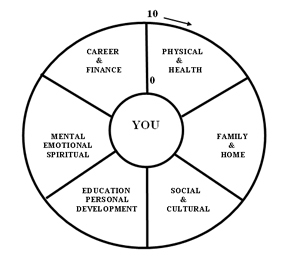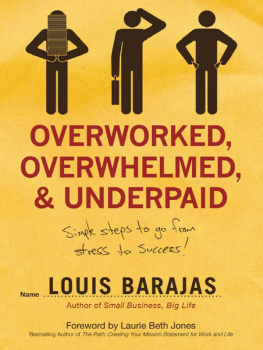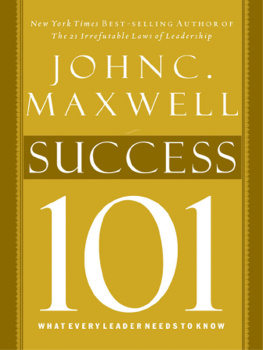The first of the five core components to rapid success is creating a compelling vision and plan. Key word here is compelling. You have to strongly desire that goal, that vision, that thing that you want to attain.
Youve got to passionately want it. Napoleon Hill, the author of Think and Grow Rich said, Desire is the starting point of all achievement. Not a hope. Not a wish. But, a keen, pulsating desire which transcends everything!
Has there been something that you really wanted, whether it was in school, when you first went to work, when you were dating someone. But there was something you really wanted. You had a vision. You worked at it. You did something. You took responsibility whether it was being a better golfer, becoming an exquisite cook, learning to be a more effective communicator so that you didnt have as many conflicts and communication breakdowns, learning a new skill in business which gave you an edge, finding a way to better handle your computer or work on the internet. Whatever it was you really wanted it. And you went out there. You had a vision. You could see the goal in the end and what you wanted and you moved towards it.
Gaining Perspective
When I was growing up, my mother was good friends with a couple in Southern California, that we oftentimes visitedLiz and Gerald Jennings. Mr. Jennings was the owner of the Everest Jennings Corporation which in its day was the largest manufacturer of wheelchairs in the world. One summer after I finished my summer before high school started up again, I drove down to Bel Air in LA, and spent two weeks with the Jennings.
One morning over breakfast I asked Mr. Jennings, How do I get successful like you? He looked at me and kind of laughed and he said, Well, you know there are many things you have to do, BUT, one of the first things you need to figure out is what are you willing to do. Youve got to know what youre willing to do to have all of this. Will you do anything? Well, most of us wont, but you need to think about what you are willing to do to achieve your desires?
He went on to say, The second question, and this may even be more important than the first one, is what are you willing to give up? I didnt really understand what he meant. He said, Do you ever blame other people? Part of what you have to give up is your blame. Part of what you have to give up maybe could be some of your time. It could be you have to give up or spend money on your goals instead of on something else.
Perhaps youll have to trade-off taking that exclusive vacation, so you can use your money on other things. But the first thing you have to do is you have to own your part of it. You have to quit blaming and pointing fingers, and accept your part in that you had a hand in building your reality today.
Whatever your life is at this moment in time, you had a hand in making it what it is. Now, once you accept responsibility you can un-create that if you wish, or you can re-create it and make it even better than it is now. Profound success comes from taking full responsibility for who we are. He paused, and then advised me again, What will you trade off? What will you give up?
A few years later, as I thought about Mr. Jennings input, I decided, its rather like walking down the street and you have two large suitcases. You couldnt carry any more if you had, to because these are big and theyre heavy. And, theyve got all your stuff in them.
As you come down the street, sitting there on the sidewalk is a brand new suitcase you can have, with all this wonderful stuff in it. You can either take the new suitcase or you can keep the old one but you have to put one down. Youve either got to let go of the old suitcase, even though its well worn and you like it, or you can have the new one and what is in it. The key is that youve got to let go, or put something down, in order to have something new.
Taking Responsibility
You have to take responsibility for creating your life. YOU have to decide what youre willing to give up. YOU have to decide what youre willing to do. So you design your vision. Its a detailed map for going from where you are today to where you desire to be in the future. You have to look at the exact steps; the details of your goal or your vision.
You dont have to know every little piece of it along the way. You dont have to know every detail. But you have to begin to put some of the details together and at least generally know the steps you want to move in the process of going there. One of the things you truly have to do is you have to be 100% honest with yourself about where you are today and where you want to get to.
You see, theres really no such thing as a perfectly balanced life. Crises erupt, priorities shift, finances or health changes. But you need to do what you can in those things you can and do have some control over to get some balance in your life. Your vision, your desired outcome, your goals, must be for all parts of your lifenot just some, but for all parts of you life.
The Life Wheel
There is a process I use when I do trainings with people and it helps them look at their life. Its called a Life Wheel. Its the six core areas that are the main parts of our life. Theres 1. physiology and health, 2. career and finances, 3. home and relationships, 4. recreational, social and cultural involvements and contributions, 5. learning and personal development, and 6. mental, emotional and spiritual aspects of our lives.
I want you right now to do a little experiment with me. If youre where you can write, I want you to grab a pen and a paper if you dont have one already, and just do this experiment. Play along with me here. Itll be quite eye opening Im sure.
Id like you to draw a circle thats three or four inches in diameter. Big, round circle three or four inches in diameter. Now, I want you to intersect that circle in specific ways. I want you to cut it, like youre cutting a pie, into six equal pieces.

The first line I want you to draw straight up and down, top to the bottom of the circle, and then two more lines across the circle. So youve cut it into six equal pieces of a pie, okay. When you get done it will look sort of like an old wagon wheel with six main spokes is what it really is.
Now, on these lines youve drawn through that circle cutting this into six pieces of pie or a wagon wheel with six spokes on it radiating from the center out. I want you to think about that each of these lines, or each of these pieces of the pie is one of those six areas of your life, okay. Its a metaphor.
So what Id like you to think about is that in the center of the circle near the hub there is a zero value there. Theres no energy right at the center of the circle. At the outer edge of the circle on the outside of the wheel it self would be a 10. Each one of those lines is like a sliding scale. It goes from zero in the middle of the circle to a 10 at the maximum on the outside.
So heres what I want you to begin doing; I want you to think about it this way. These six pieces of this pie are the six areas of your life. A zero means I am giving no energy or time to that part of my life. Its something Im not focusing on. Im not doing much with it at this point in time. Just really not much happening there.
On the other hand, a 10 means Im really giving it a powerful, a huge amount of focus and energy to it every frequently. Im putting a lot into it. So zero is no time or energy, up to 10 is Im strongly focusing on it. Im really doing everything I can to make it happen. I want you to rate the various parts of your life.







